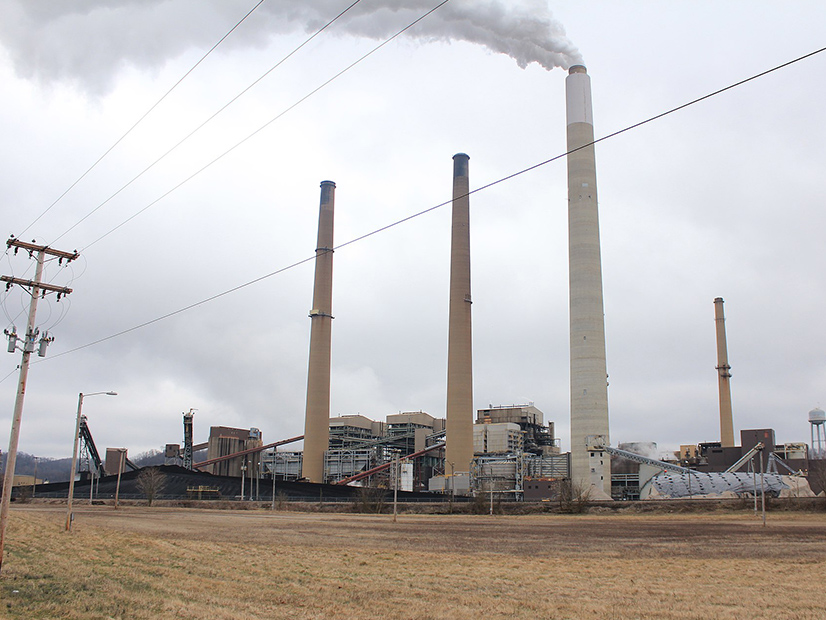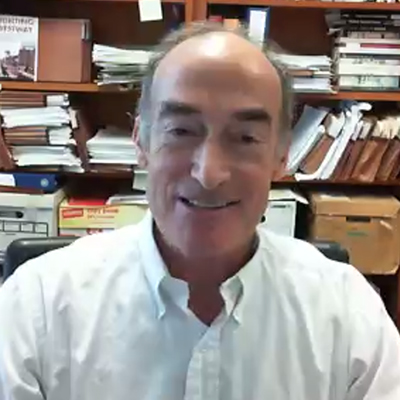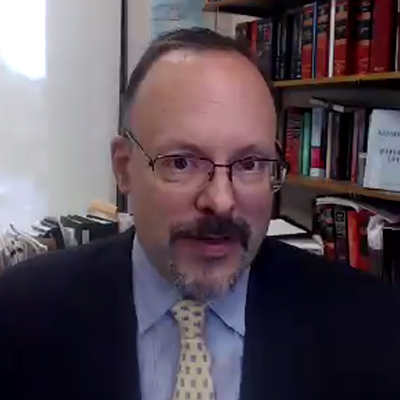
While the U.S. Supreme Court decision in West Virginia v. EPA has been called “devastating” for the agency’s ability to curb carbon emissions from existing power plants, its impact could also place tight constraints on congressional efforts to address major issues such as climate change, a panel of legal experts said last week.
 Lisa Heinzerling, Georgetown Law | Georgetown University Climate Center
Lisa Heinzerling, Georgetown Law | Georgetown University Climate Center
“The most dangerous point of the court’s decision actually is the court’s seizure of power from Congress, not the agency,” Lisa Heinzerling, a professor at Georgetown University Law Center, said during a webinar hosted by the school’s Climate Center on July 5. “Under the opinion, Congress may no longer enlist agencies’ help in addressing major issues, as it’s done throughout U.S. history, unless it speaks clearly enough for a hostile Supreme Court to hear it. It’s perverse.”
Heinzerling was one of five environmental lawyers on the panel parsing out the details of the decision, the court’s motivations and reasoning, and how environmental and other federal regulations may be able to overcome the obstacles the court’s conservative justices have now put in place.
The 6-3 decision released June 30 ruled that EPA lacks authority to compel generation shifting to reduce carbon emissions, saying the agency failed to provide “clear congressional authorization” for the rulemaking, specifically under the decades-old Clean Air Act. (See Supreme Court Rejects EPA Generation Shifting.)
 William W. Buzbee, Georgetown Law | Georgetown University Climate Center
William W. Buzbee, Georgetown Law | Georgetown University Climate Center
But Heinzerling and other panelists also said the decision will have impacts beyond congressional or EPA efforts to regulate carbon emissions. William W. Buzbee, who also teaches at Georgetown Law, sees the case as “a major arrogation of power by the Supreme Court to itself and the courts, undercutting the power of agencies to do as Congress instructs.”
“This is a terrible problem,” Buzbee said. “The court sort of hamstrings agencies and actually makes it hard for Congress.
“The court repeatedly says Congress had to be more clear and more specific,” he said. “The problem there is that agencies often need flexibility, so you don’t want to have very particularized language. And then second, to pass laws, compromises are often needed, and so sometimes, broader language is a way for Congress to pass laws that are needed.”
 Jonathan H. Adler, Case Western | Georgetown University Climate Center
Jonathan H. Adler, Case Western | Georgetown University Climate Center
Jonathan H. Adler, director of the Coleman P. Burke Center for Environmental Law at Case Western Reserve University, said the decision sends a message to all federal courts to be “very wary when federal agencies seek to pour new wine out of old bottles. That is to say, when a federal agency takes a statute that may have been last enacted or reauthorized or amended years ago and seeks to use the provisions to address a new or contemporary problem … that has not been addressed before or to do something in a way that has not been done before.”
“This is an enormously important case when it comes to administrative law,” agreed Jeffrey Holmstead, who served at EPA under former President George W. Bush and now leads the Environmental Strategies Group at Bracewell. “In terms of the current debate over climate change, I think it could end up being important for the [Securities and Exchange Commission] in terms of its efforts to mandate additional disclosures regarding greenhouse gas emissions. Maybe it could impact what FERC is trying to do with natural gas pipelines.”
Kirti Datla, director of strategic legal advocacy at Earthjustice, a nonprofit environmental law firm, also sees the decision as having impacts on the regulatory process in general, well beyond EPA. “It’s going to affect everything, from what people ask [an] agency to do in their comment letters, to what agencies think that they can do, to the arguments people will raise when challenging what agencies end up doing,” she said.
The Major Questions Doctrine
At the core of West Virginia v. EPA is Chief Justice John Roberts’s invocation of “the major questions doctrine,” which all the panelists saw as problematic, though for different reasons.
“Precedent teaches that there are ‘extraordinary cases’ in which the ‘history and the breadth of the authority that [the agency] has asserted,’ and the ‘economic and political significance’ of that assertion, provide a ‘reason to hesitate before concluding that Congress’ meant to confer such authority,” Roberts wrote in the decision.
“The agency must point to ‘clear congressional authorization’ for the authority it claims,” Roberts said.
In terms of EPA’s ability to regulate carbon emissions through generation shifting, what this means, Adler said, is that the agency is not losing a power it didn’t exercise; “it’s rather that the court is expressing skepticism that the power ever existed.”
“The court automatically is skeptical of national regulations where agencies address a new problem,” Buzbee agreed. “That’s always the nature of national regulation; agencies step in to address a problem that hasn’t been handled. So, the whole frame of the major questions doctrine is a major problem.”
 Kirti Datla, Earthjustice | Georgetown University Climate Center
Kirti Datla, Earthjustice | Georgetown University Climate Center
Datla pointed to Justice Neil Gorsuch’s concurring opinion as potentially layering on even more constraints for regulation, noting that he said the major questions doctrine is important “because it prevents swings in policy” between different administrations.
“The administrative state, in his mind, should be a set of agencies carrying out very limited duties that are so detail oriented that they wouldn’t shift from one president to the next,” Datla said. Justice Elena Kagan’s dissent counters this narrow view as not “what the administrative state currently looks like,” Datla said.
But for Datla, the more pressing problem with the decision is that after setting out the major questions challenge, ‘the majority doesn’t provide any sort of test as to what might be adequate to overcome it. It’s hard to imagine a case where, when this doctrine applies, the agency will be able to overcome the kind of clear statement rule that is being put forth in this case,” she said.
“Congress has two options going forward,” said Heinzerling, who also served at EPA during the Obama administration. “One, it can make major policy decisions itself, or two, it can give clear congressional authorization to an agency to regulate in a particular manner. In fact, I don’t think there’s a real choice.”
The decision “would not allow Congress to pass off a major decision to an agency, even if it really, clearly, in crystal terms passed off that decision to an agency,” she said.
For example, if Congress passed a law specifically authorizing EPA to determine if and how to curb GHG emissions, “I think the court would say that such a statute does clearly authorize EPA to decide a major question,” Heinzerling said. “That would just take the regulatory action out of the statutory frying pan, so to speak, and hurl it into the constitutional fire.”
The Limits of Regulation
Adler sees yet another aspect of the decision’s approach to the major questions doctrine that could have significant impacts on future climate-related litigation. “This concern about showing clear warrant, clear authority in the statute for a major exercise of power is something [Roberts said] the courts should look at upfront” as part of a statutory analysis, he said. “It creates a much broader opportunity for litigants to try and invoke this theory. It gives courts more flexibility in terms of when to consider whether something is a major question.”
Still, Holmstead echoed many other industry analysts who have argued that the decision will have minimal immediate impact on EPA’s ability to regulate carbon emissions under the Clean Air Act. The decision’s rejection of limiting emission reduction regulations to “inside the fence line” of individual generation plants and its seeming endorsement of some form of emissions trading “actually give EPA more flexibility that they thought it had,” he said.
He also said the agency has solid authority to regulate carbon emissions from the transportation sector, provided it sticks with the incremental approach it has adopted in the new standards announced at the end of 2021. (See EPA Rules Will Slash Vehicle Emissions, Rev up EV Market by 2026.)
The challenge ahead for the agency is “if you look at the other industrial sectors,” Holmstead said. “There’s not some way that EPA can gradually shift production of cement or iron and steel to newer, cleaner plants. It’s a technological problem, not a regulatory problem, and I don’t think, beyond the power sector, EPA has really ever developed an effective way to do regulation of industrial sources.
“I don’t think the answer for all of the questions we face with climate change are necessarily regulatory,” he said.

